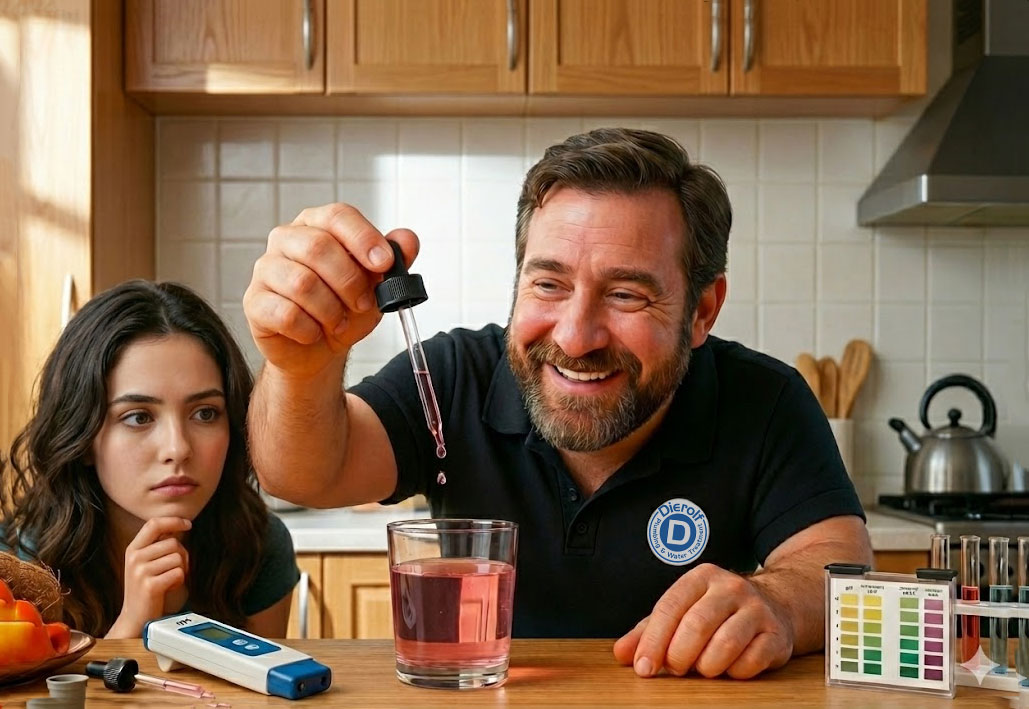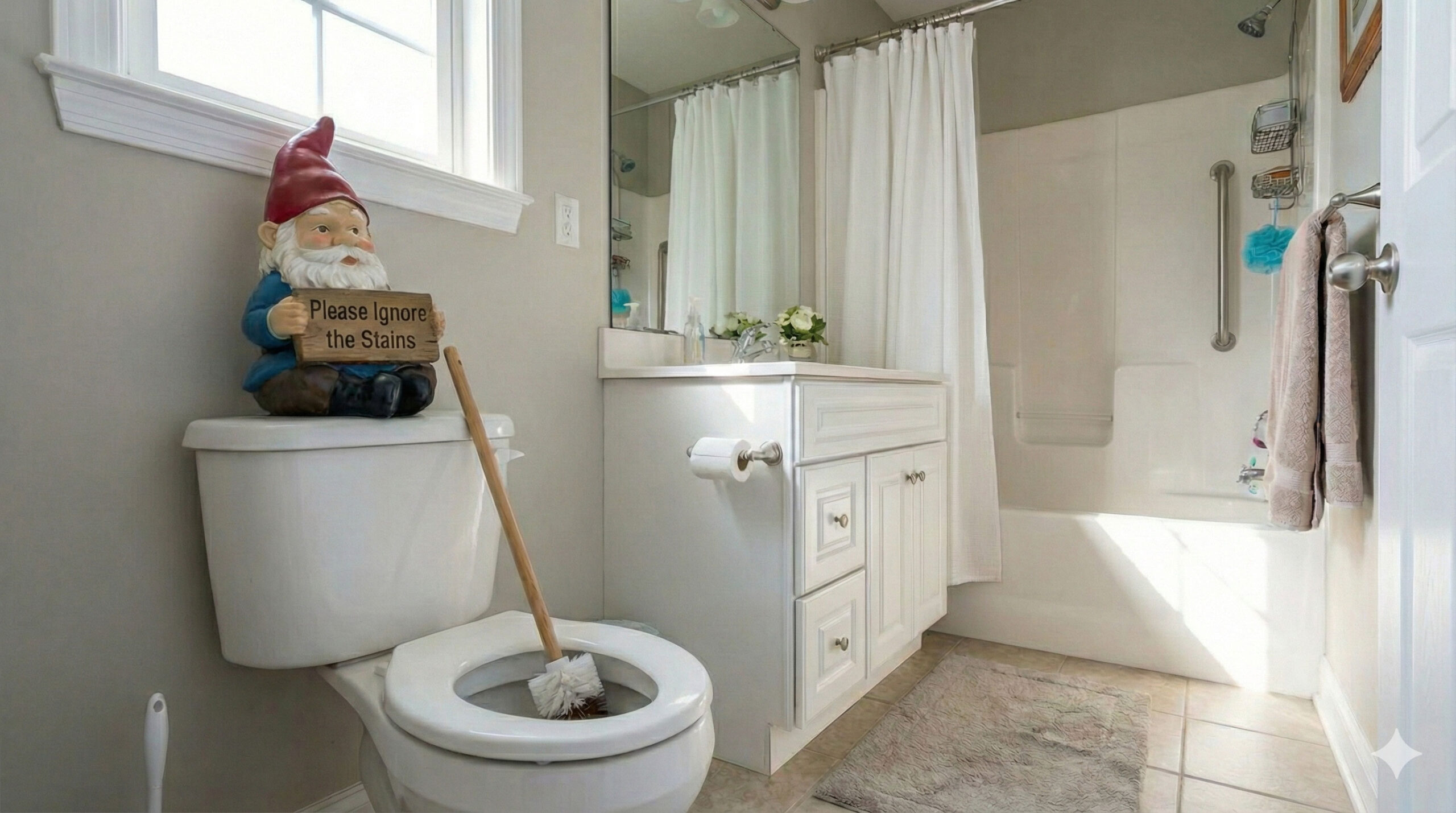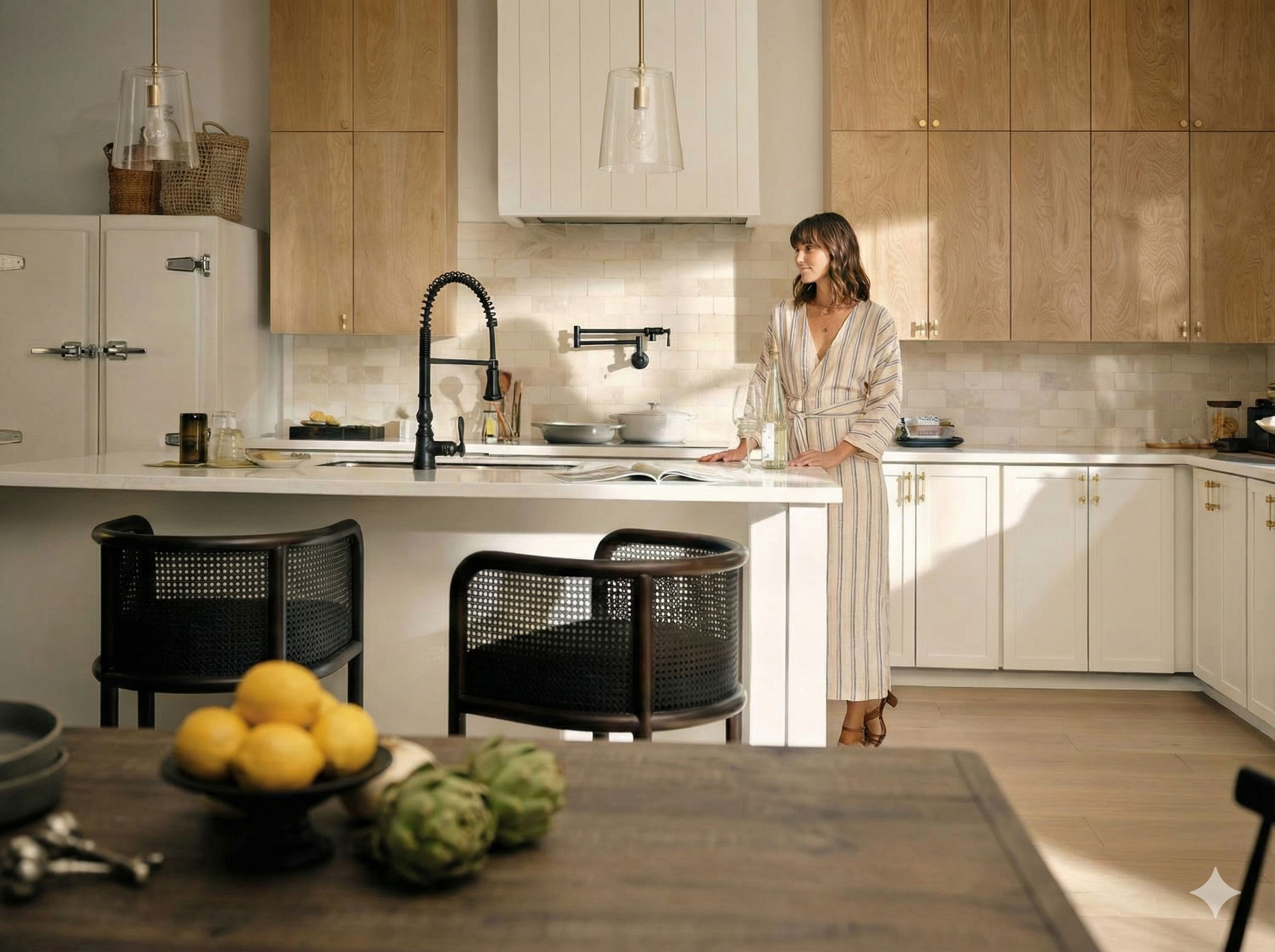Learn why air gaps are essential for protecting your home’s water supply from contamination, ensuring code compliance, and preventing costly plumbing failures.
- 1) What Is an Air Gap (And Why It Matters)?
- 2) The Problem: Backflow Contamination Is Real
- 3) What the International Plumbing Code Says About Air Gaps
- 4) Where Air Gaps Are Required in Water Treatment
- 5) What Happens When They’re Missing or Improperly Installed
- 6) A Deeper Look: Design Matters More Than Most People Realize
- 7) Why Dierolf Installs Code-Compliant, Long-Term Solutions
- 8) Want Peace of Mind? Make Sure You’re Protected
1. What Is an Air Gap (And Why It Matters)?
An air gap is a small but crucial plumbing feature that creates a physical break between your drinking water and potential contaminants. It’s simply the vertical space between the discharge outlet and the drain it flows into — and it ensures water can only move one direction.
If your water softener, reverse osmosis, or filtration system doesn’t have a proper air gap, you could be siphoning waste back into your clean water — especially during pressure changes or clogs.
2. The Problem: Backflow Contamination Is Real
We’ve seen it firsthand: improperly installed systems that allow gray water, bacteria, or debris to flow back into the supply line. This type of cross-contamination:
- Can pose serious health risks
- Will fail plumbing inspections
- Might void your home warranty
- Often goes undetected until it’s too late
Air gaps are a non-negotiable defense against this type of hazard.
3. What the International Plumbing Code Says About Air Gaps
The International Plumbing Code (IPC) requires air gaps for any connection between a drain and a potable water supply:
“The discharge piping serving as backflow prevention shall terminate in an approved air gap.”
– IPC 2021, Section 608.14.1
Key requirements:
- At least 1 inch of vertical separation, or
- Twice the diameter of the outlet pipe — whichever is greater
👉 Read the official IPC code here.
4. Where Air Gaps Are Required in Water Treatment
Proper air gaps are mandatory for systems that discharge water, including:
- Reverse osmosis (RO) systems
- Water softeners
- Backwashing filters and neutralizers
- Any drain-connected water treatment device
Want to understand the ins and outs of air gap configurations? The team at US Water Systems offers a helpful breakdown here.
5. What Happens When They’re Missing or Improperly Installed
Here’s what we’ve encountered in real homes across Southeastern PA:
- RO drain lines zip-tied or taped into a drain line
- Water softener discharge tubes shoved into standpipes
- Drain lines routed below flood-level rims
- “Air gaps” that are too short or don’t meet code
These DIY or low-cost installs are not only unsafe, they often damage homeowner trust and cause failures at real estate closings.
Before you hire anyone to install your system, read How to Choose the Right Water Treatment Company: What Most Homeowners Miss.
6. A Deeper Look: Design Matters More Than Most People Realize
Installing an air gap isn’t just about following code — it’s about system performance and longevity.
A poorly designed gap can:
- Splash, leak, or overfill during regeneration
- Allow backpressure to build up
- Invite bacterial buildup or smells if stagnant
That’s why all of our systems — from whole home filters to softeners — are designed holistically to ensure safety, performance, and long-term peace of mind.
7. Why Dierolf Installs Code-Compliant, Long-Term Solutions
We’re not just water treatment installers — we’re licensed master plumbers with decades of experience designing systems that work right the first time.
- ✅ We install proper air gaps on every applicable system
- ✅ We train our team on IPC-compliant installations
- ✅ We evaluate your entire setup, not just the equipment
- ✅ We pass inspections the first time — every time
8. Want Peace of Mind? Make Sure You’re Protected
If your system was installed by someone who wasn’t code-savvy — or you’re not sure if your drain setup is safe — we can help.
- 📍 We’ll inspect your installation
- 🔍 Check for proper backflow protection
- 🛠️ Redesign or retrofit the drain line if needed



